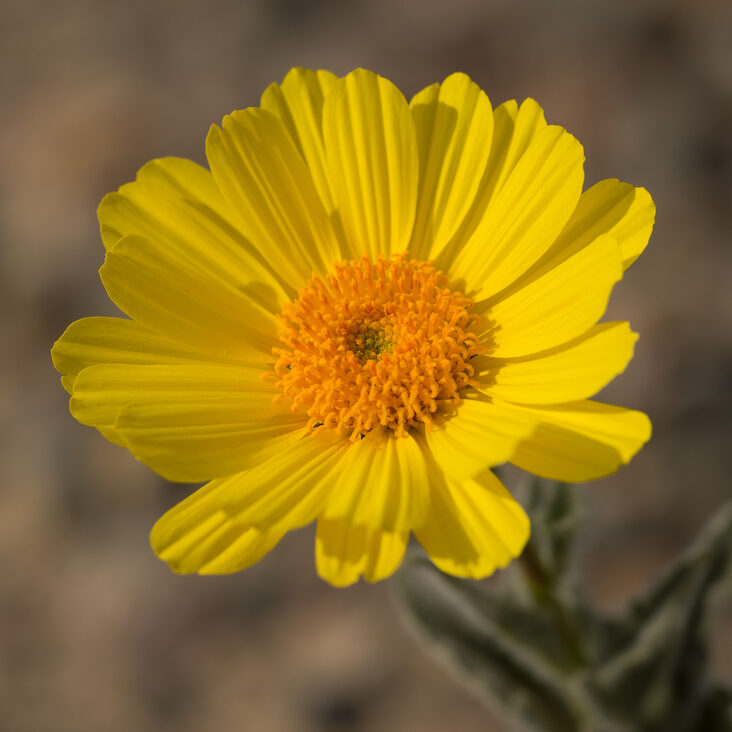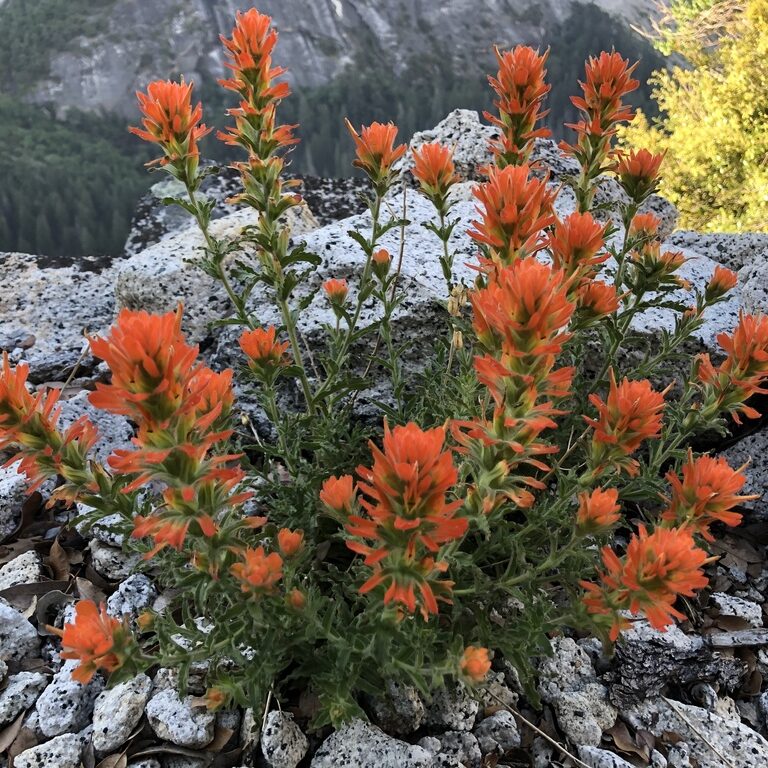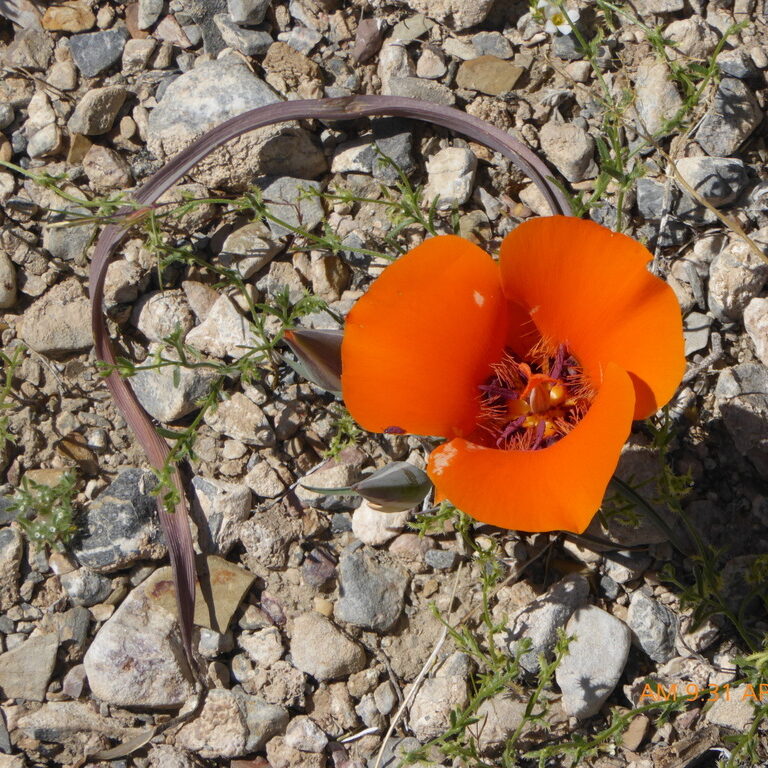
Desert Marigold
Desert Marigold (Baileya multiradiata) is an 8 to 20-inch tall perennial with white, wooly stems that branch from a taproot. The flower heads are approximately one inch in diameter with numerous yellow, hairy disk flowers and 50-60 bright yellow ray “petals” arranged in rows. They bloom in April and sometimes into July, growing around the Towne Pass area from 2,000 to 5,000 feet.

Desert Gold
Desert Gold (Geraea canescens), is a slender daisy-like flower with 1/2-1 inch long yellow ray petals, growing up to one foot in height. Leaves grow only at the base and are dissected with pointed lobes. It can be found on flats, slopes, and alluvial fans below 5,000 feet in creosote brush scrub and Joshua Tree woodland habitats.
Desert Star
Desert Star (Monoptilon bellioides) is a small annual flower that reaches only 6 inches tall. It is covered with stubbly hairs with linear half-inch long leaves. Its flower heads are composed of numerous yellow disk flowers and 12-20 white ray flowers. This flower is common on sandy and gravelly flats and washes below 3,000 feet in creosote bush scrub.
Wavyleaf Desert Paintbrush
Wavyleaf Desert Paintbrush (Castilleja applegatei) is common in the Telescope Peak area. The Wavyleaf Desert Paintbrush is easily recognized during the spring bloom by its bright red paintbrush-shape. It is a short perennial with sticky, wavy-edged leaves and grows at upper elevations.
Mariposa lily
Mariposa lily (Calochortus kennedyi) is a 4 to 8-inch tall perennial with up to 8-inch long linear leaves that remain coiled on the ground before the flowering stem appears. You can find these beautiful flowers between 2,000 and 6,500 feet in creosote bush scrub, Joshua tree woodland, and pinyon-juniper woodland between shrubs in rocky soil.

Grape Soda Lupine
Grape Soda Lupine (Lupinus excubitus) grows up to three feet high and has alternate, palmately divided leaves that take on a silvery color due to dense, flattened hairs on their surface. It blooms in the spring from April until June, with blue-violet flowers in branched clusters. It can be found in rocky soils from 3,000 to 7,000 feet and is common on the western slope of the Panamint range.

Eureka Dunes Evening Primrose
Eureka Dunes Evening Primrose (Oenothera californica ssp. eurekensis) is a rare perennial flower found on the Eureka Valley Sand Dunes in the northern area of Death Valley National Park. This plant is well adapted to life on the dunes. It blooms from April through June, growing four large white 1-inch long petals. Finding a Eureka Dunes Evening Primrose is a unique Death Valley experience! It is endemic to the Eureka Dunes and considered rare due to its limited distribution.



